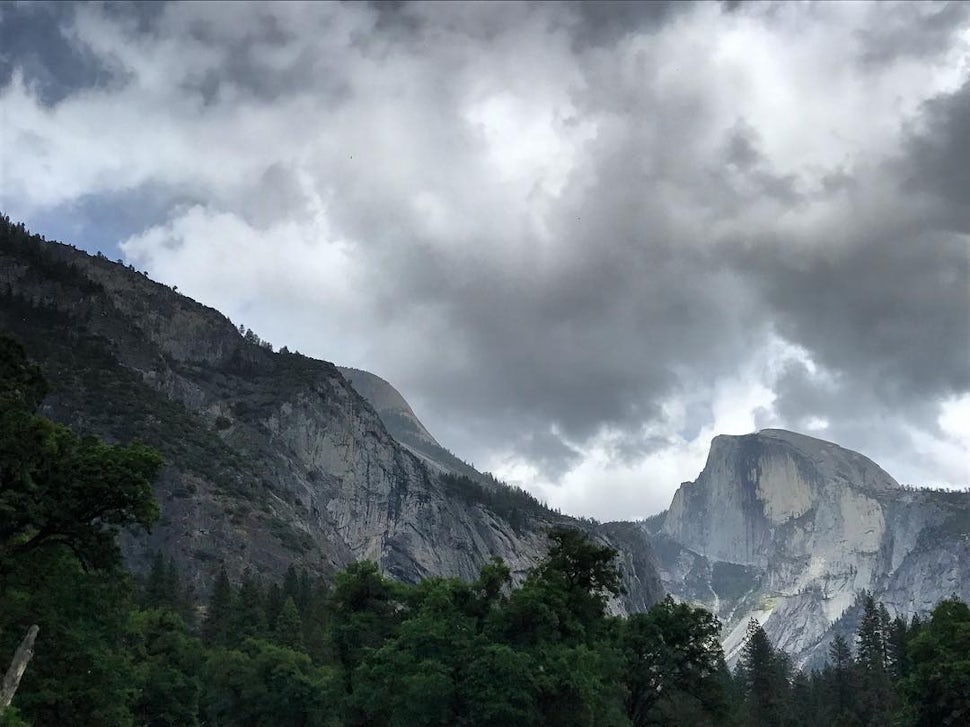10 Tips for Camping in Yosemite
Snagging a site in Yosemite isn't easy, but it's always worth it.

It’s summertime, and you are stoked about snagging permits for your adventure in the great California national park. Yosemite is one of the United State’s premier national parks, and it takes some work to plan a successful trip. Finding a place to sleep can be difficult with the summer congestion. Before you find yourself stuck navigating the heavy crowds, take a look at these keys to locating a place to set up camp.
1. Plan ahead.
Know what campsites are close to your end destination, and research them in advance. Map out your destinations, and plan your arrival time.
2. Find less popular times to go.
If you have been to Yosemite on a summer weekend, you know what I mean. If you haven’t, you’ll be surprised at how many people can fit into one national park (Yosemite Valley in particular). The best times to go are early spring and late fall during the week.
3. Arrive early.
Like really, really early. People will start showing up at 10 am, and campgrounds will be full by early afternoon, especially on weekends. Find your site and set up your tent, then you can leave to do as you please without worry.
4. Stay near your destination.
Yosemite has five entrances: Hetch Hetchy, Tioga Pass, Arch Rock, Big Oak Flat, and South Entrance. Know where you want to go, and try to stay near your desired trailheads or areas. The winding mountain roads can take ages, and you will get stuck behind RVs.
5. Consider your (several) options.
Do your homework about national park camping. If you have a Wilderness Permit, Yosemite National Park provides Backpacker’s campsites within the park that you can use the night before your permit is valid. There are also several campsites within the park, but for these, you must reserve your spot long in advance. For more distant options, there are many BLM, USFS, and private campgrounds just outside the park.
6. Reserve in advance.
If you plan on camping on private campgrounds or within the park, make a reservation as soon as possible. This may mean several months before your trip.
7. Look at Bureau of Land Management (BLM) or US Forest Service (USFS) land as an option.
BLM and USFS land is all over the Western United States, and they surround the park. The land is free to camp on, and you can pretty much do as you please. But before you go trekking off into the woods, use Google Earth and have spots in mind (dirt roads, forest clearings, and river shores are good places to start).
8. Have backup plans.
Campsites within and outside of Yosemite fill up like In-N-Out on a Friday night. Find several alternatives nearby so that you aren’t wasting time trying to find a place to sleep using Google with spotty 3G.
9. Pack smart.
Even in June, Yosemite can reach freezing temperatures. Or it can be 100˚F. Or it can be pouring rain. Or all of the above. Pack everything you think you might need, and check the weather forecast regularly.
10. Don’t wing it.
As one of the United State’s most popular national parks, Yosemite is always packed from April to October. The winter season is not, but you should still have your plans made long before you expect to make the trip. It’s worth the extra work to do your research and have a smooth and unforgettable time!
We want to acknowledge and thank the past, present, and future generations of all Native Nations and Indigenous Peoples whose ancestral lands we travel, explore, and play on. Always practice Leave No Trace ethics on your adventures and follow local regulations. Please explore responsibly!
Do you love the outdoors?
Yep, us too. That's why we send you the best local adventures, stories, and expert advice, right to your inbox.








